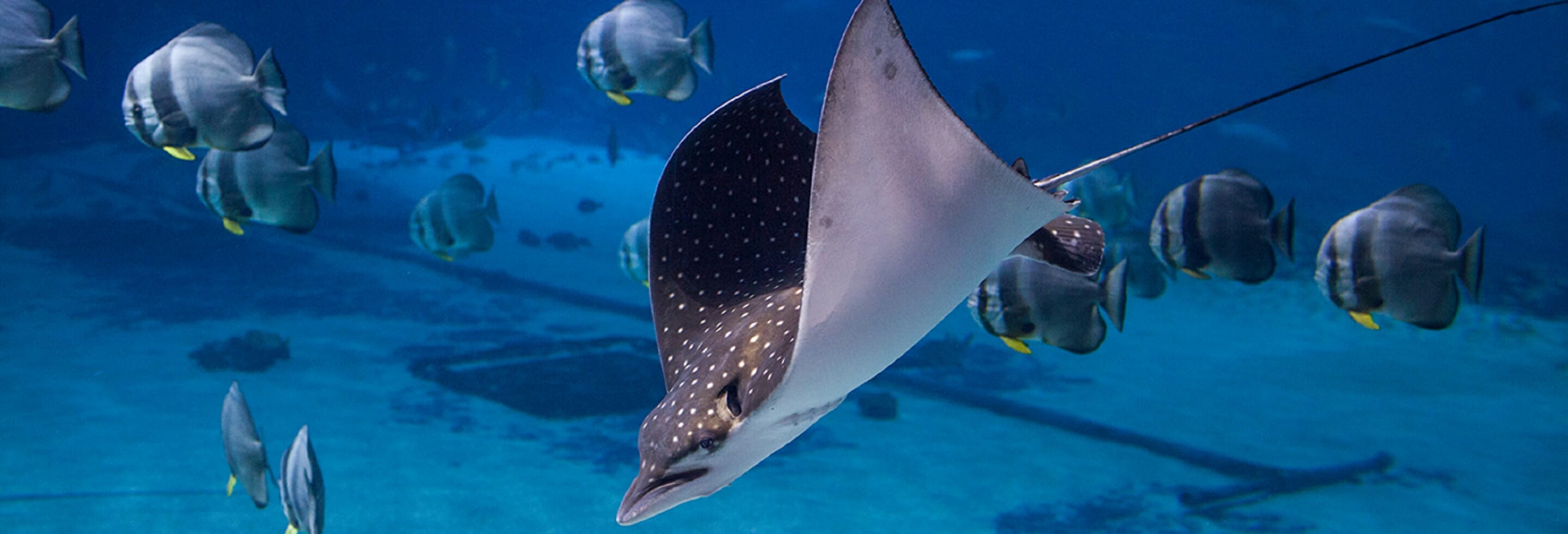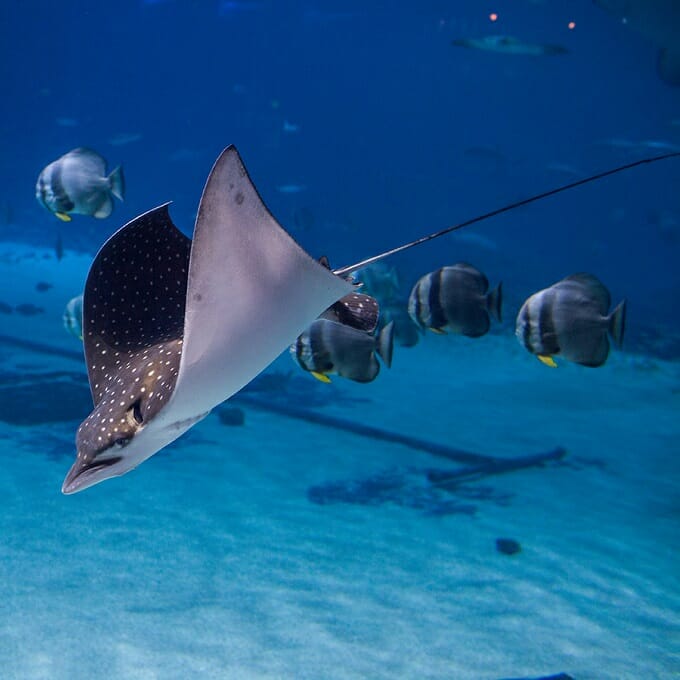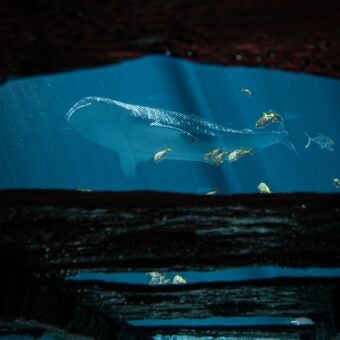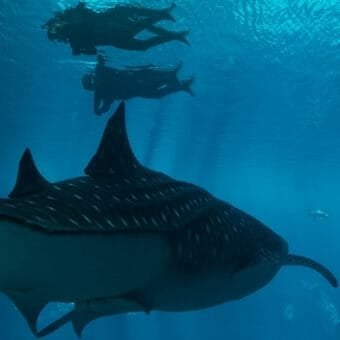-
Size
4-5 feet (1.2-1.5 m) -
Diet
Fish, cephalopods, crustaceans -
Range
Indo-Pacific and the Atlantic Ocean -
Habitat
Tropical and warm temperate waters, over the continental shelf
Physical Characteristics
- Adult spotted eagle rays can reach a width of 10.8 feet (3.3 m) and a total length of 16.4 feet (5 m) with an undamaged tail.
- Can reach a maximum weight of 507 lbs. (230 kg).
- Its body, or disc, is very angular and thick, with a broad snout that is flat and rounded like a duck’s bill. There are large spiracles located directly behind the eye.
- The wing-like pectoral fins are broad with pointed tips.
- Long whip-like tail reaching lengths of 2.5 to 3 times the width of the disc. There are 2 to 6 barbed spines at the base of the tail.
- It has a single row of broad, flat teeth in each jaw that combine to form upper and lower plates for crushing its shelled prey.
- The spotted eagle ray has a distinctive pattern of small whitish spots across the back, which is black, dark gray or bluish in color. The ventral surface is white. Its smooth skin lacks significant denticles or thorns.
Animal Fact
The spotted eagle ray will use its broad, pointed snout to probe the substrate for its bottom-dwelling prey.
Diet / Feeding
- Diet consists of a wide variety of benthic animals: worms, bivalve and gastropod mollusks, cephalopods, crustaceans and fish.
- Uses its snout to probe in the mud for benthic invertebrates.
Range / Habitat
- Spotted eagle ray occurs across the Indo-Pacific and Eastern and Western Atlantic in tropical and warm temperate waters.
- Found over the continental shelf from the surface to about 260 feet (79 m) in depth. Spends most of its time in open water, though also found in coastal environments. This ray also will sometimes enter estuaries and may cross ocean basins.
Reproduction & Growth
- Ovoviviparous- females give birth to 2-4 pups after a gestation period believed to last about one year.
- Pups are about 7-14 inches (18-36 cm) in disc width at birth.
Conservation Status
- “Endangered” on the IUCN Red List.
Additional Information
- This ray frequently forms large schools during the non-breeding season.
- It prefers to swim either near the surface or close to the bottom and will leap completely out of the water if pursued.
- This species is fished commercially for meat and cartilage in some locations, particularly in Southeast Asia, where populations are declining more than in other areas.
- Taken as bycatch throughout much of its range.
- There is a row of 6 or 7 papillae (small projections) on the roof and floor of the mouth behind the teeth that are believed to separate shells from prey prior to ingestion.
- Scientists are reevaluating the taxonomy of the spotted eagle ray because they suspect that as many as four distinct species may exist, not just one.



